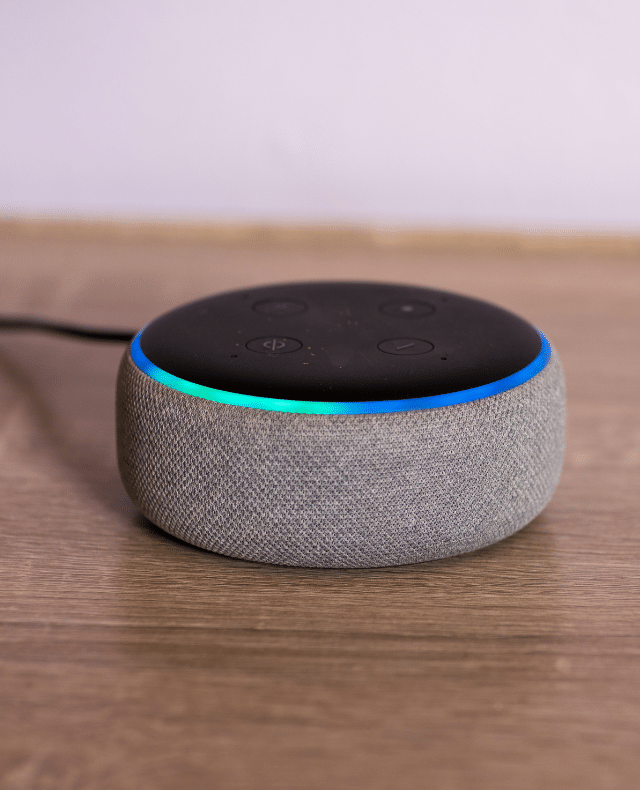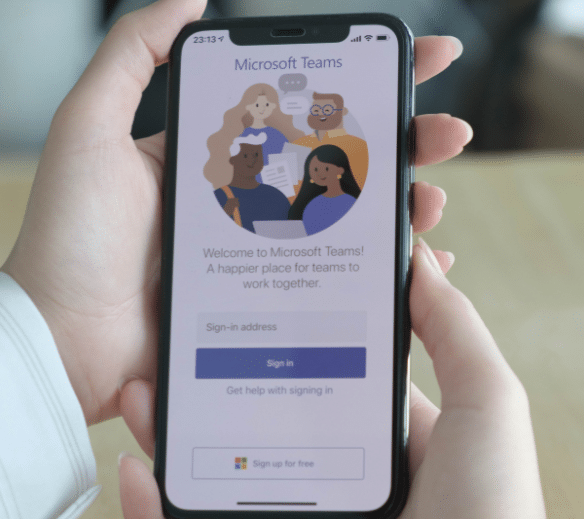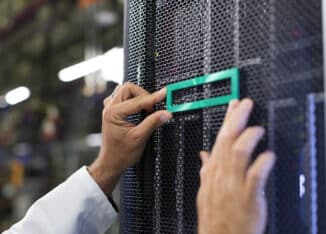
Ashley O'Connor
Marketing Executive
December 11, 2023
Ambient computing refers to a concept where computing power is integrated into our everyday lives and environments. A common example is Alexa on the Amazon Echo device, a voice assistant that has over 100,000 skills which can increase convenience in the home, from providing recipe ideas to switching the off the lights.
But what could ambient computing look like in the workplace?
Understanding Ambient Computing
Ambient computing works by learning your needs, sensing the environment, and reconfiguring the environment to meet those needs. The goal is to increase convenience in daily life through technology, while reducing the friction involved when using technology. Behind the scenes, this comes together through a combination of smart devices, sensors, software, artificial intelligence, and cloud computing.
Using Alexa as an example, speech is recorded and sent to Amazon’s cloud servers to be analysed and compared to a database of words, the device then carries out functions that correspond to the words spoken such as opening an app or completing a task. All of these actions and computer processes are happening in the background with minimal human input. This lack of human involvement means ambient computing is sometimes referred to as “invisible tech“.
Despite being an obscure term, ambient computing is widely used in many of our homes already. It is easy to imagine how useful its application could be in the workplace, resulting in saved time, money and resources.
Industry Applications of Ambient Computing
-

Agriculture
In agriculture, technology is used to optimise crop production, monitor soil conditions and manage irrigation systems. Sensors collect real-time data on temperature, soil conditions, and nutrient levels, enabling agriculture workers to carry out data-driven decisions while freeing up their time. Ambient computing in agriculture maximises productivity, minimises resource waste and promotes sustainable practices.
-

Healthcare
Today, many healthcare providers use smart devices that remotely monitor patient conditions. These devices continuously monitor signs such as heart rate, blood pressure and oxygen levels. This provides accurate and timely data to healthcare professionals, enabling the early detection of potential health issues. Through the power of ambient computing, patients can continue their daily lives and receive personalised, remote healthcare.
-

Retail
The retail landscape is being transformed by advancements in the IoT and ambient computing. One example is AI driven, cashier-less stores that enable shoppers to take on a new dimension of convenience. Sensors, real-time computer vision and artificial intelligence are combined to deliver a fully autonomous retail experience, tracking products picked up and put down by shoppers. This further enables data-driven store operations, revolutionising inventory management, refining supply chains and personalising the shopping journey for every customer.
Other examples include: in-store beacons that allow personalised offers and notifications based on a customers location, RFID tags that streamline inventory management, and mobile apps providing personalised recommendations and loyalty programs.
-

Corporate
Ambient computing is already used by many enterprises, particularly within their IT departments. HP are leading in this space with offerings such as HP Proactive insights which autonomously manages device maintenance, freeing up IT team’s time and reducing downtime for employees. Proactive insights works in the background of end-user devices, using sensors and monitoring tools to autonomously heal device issues before they impact workflow, and alert IT teams to component failures before they happen.

The Future of Ambient Computing
While “ambient computing” is a less known term, this technology has been a core focus for manufacturers over recent years. We can already find ambient computing built into most of our devices – take Apple’s “Siri” voice assistant for example. With the industry giants Amazon, Apple and Google leading the way in ambient computing, it is inevitable that others will recognise its potential and follow in this direction.
The Impact of Ambient Computing on Work-Life
We’re entering a new era of computing, and this year’s advancements in AI is a key aspect of this. In September 2023, Microsoft also announced its entry into AI, with their own offering: Microsoft Copilot.
For those who use Microsoft software products in their workday, this is huge news. Customer research conducted by Microsoft found that on an average workday, some of its heavy users receive up to 250 Outlook emails, read 150 Teams chats, and search for items 18 times. It also found that today users are in 3x more meetings when compared with 2020.
Copilot is Microsoft’s answer to this, offering a helping hand to overstretched corporate employees. Within Microsoft Teams, Copilot acts as an assistant by: joining meetings on your behalf if you’re late, tracking discussion points, summarising meetings and providing actions.


Bottom-line
In the simplest terms, Ambient Computing refers to a series of interconnected devices that work together in the background to assist and stream-line everyday tasks, based on data gathered from you and your surroundings. Despite being an obscure term, ambient computing is quickly becoming a prominent focus for technology manufactures, encompassing the development of a range of technologies such as smart devices, cloud computing, artificial intelligence and the Internet of Things (IoT).
Today we can already find ambient computing in our daily lives, but as technology power increases in future years, we should expect it to become more prevalent in the workplace. This will mean more data touchpoints away from our regular screens, invisibly and seamlessly integrating technology into our lives and environments, with the end goal of delivering us personalised experiences and a frictionless relationship with technology.










